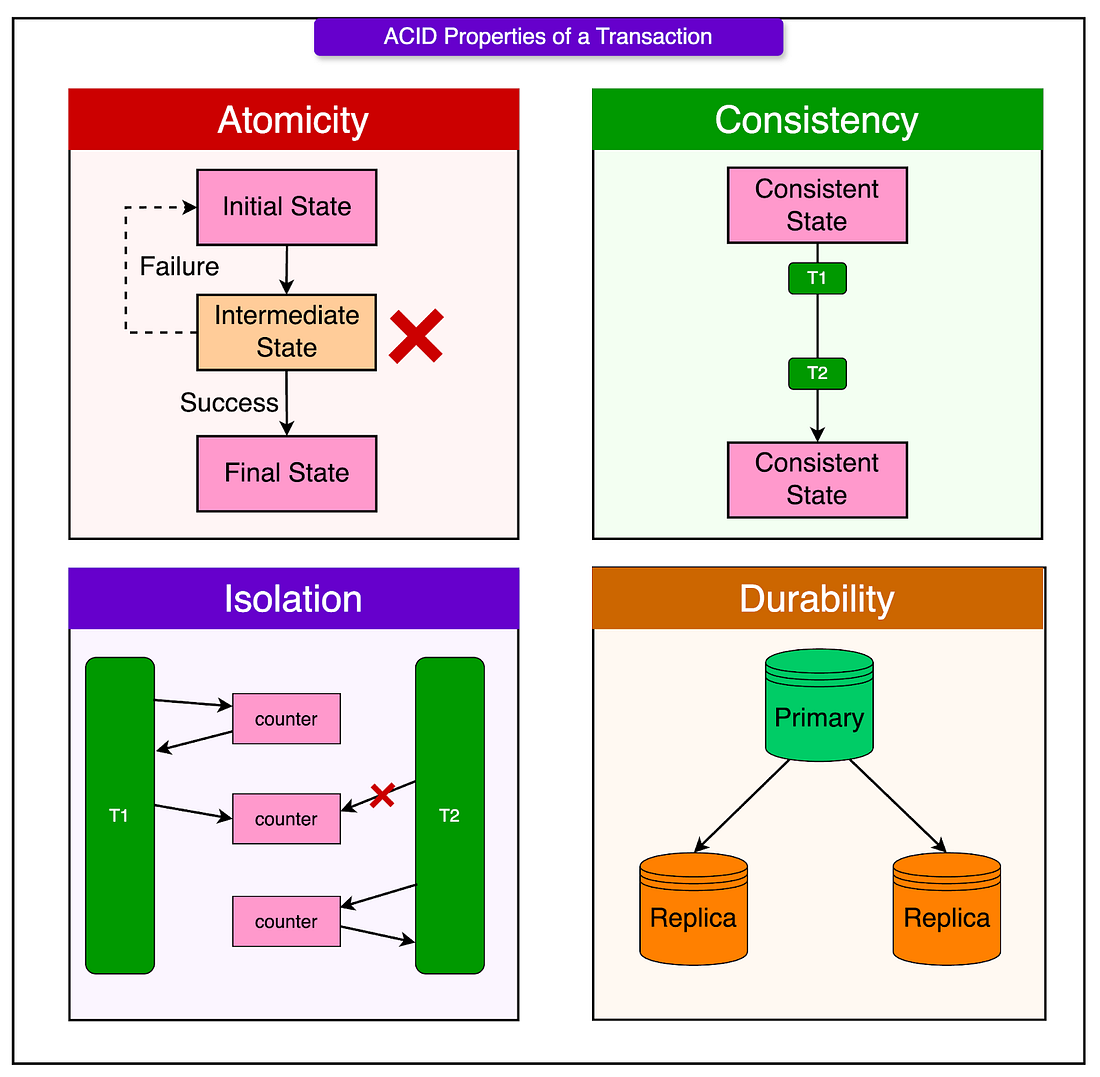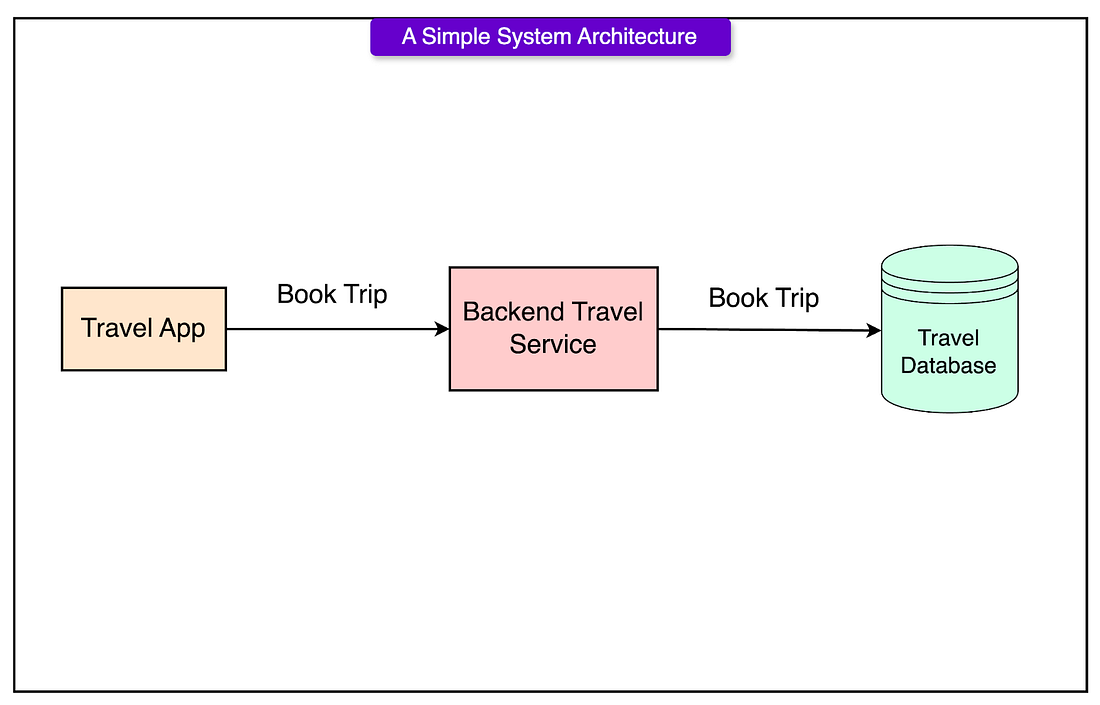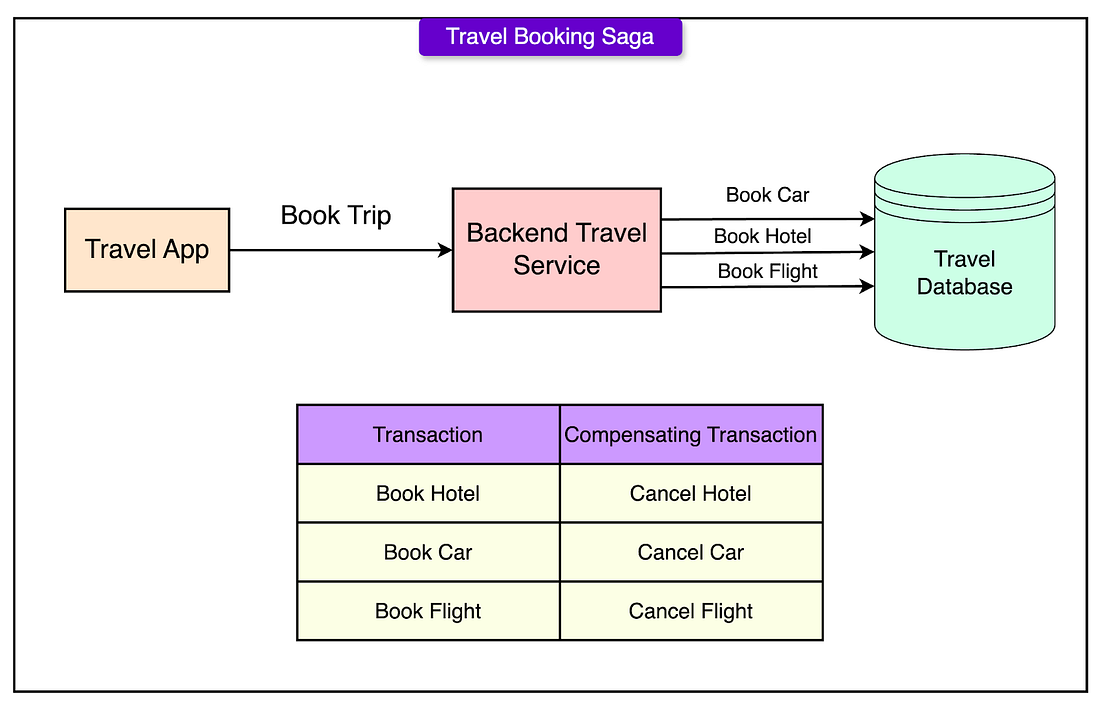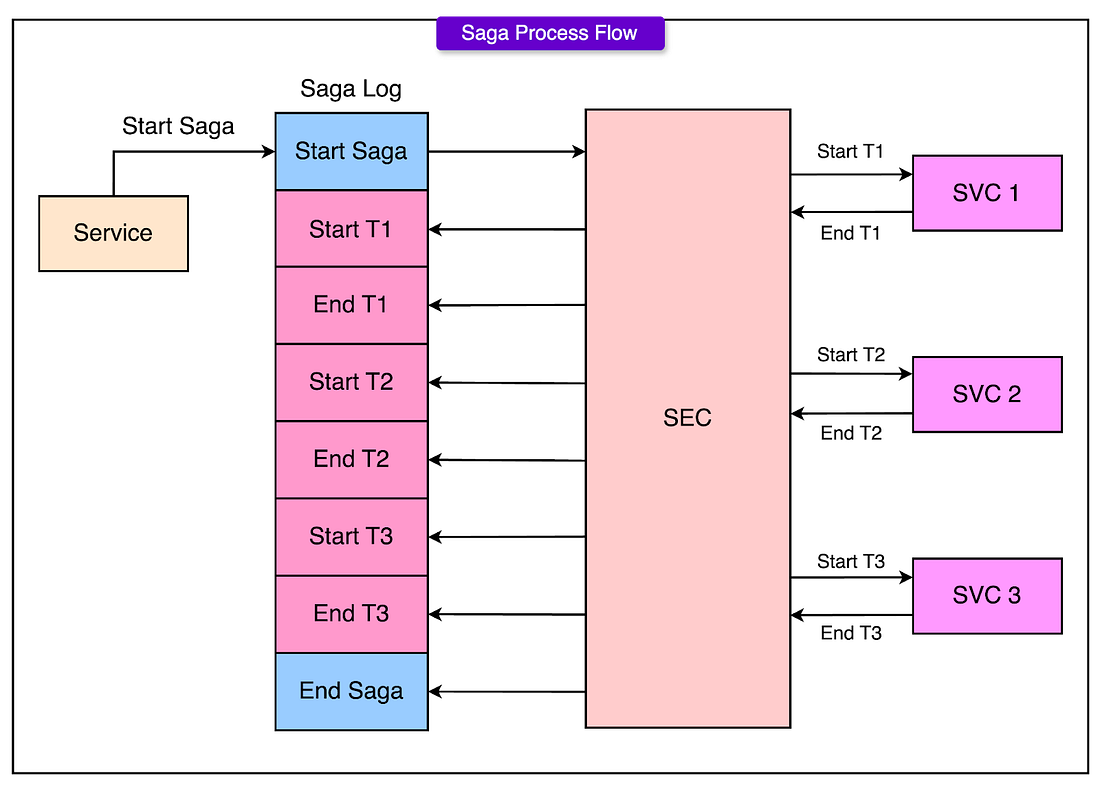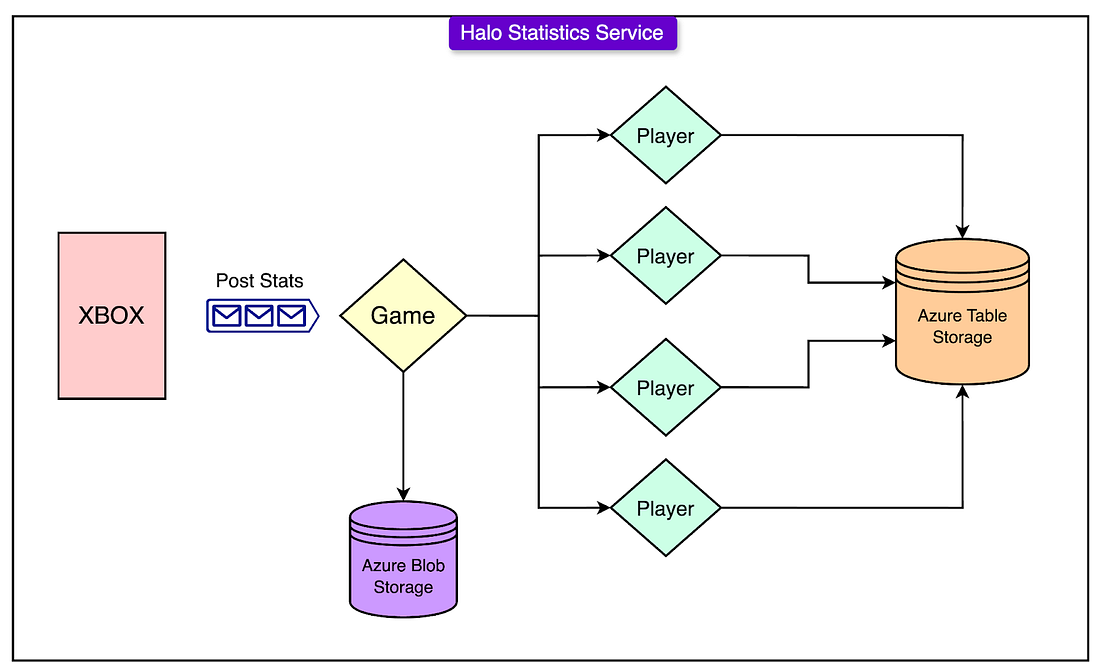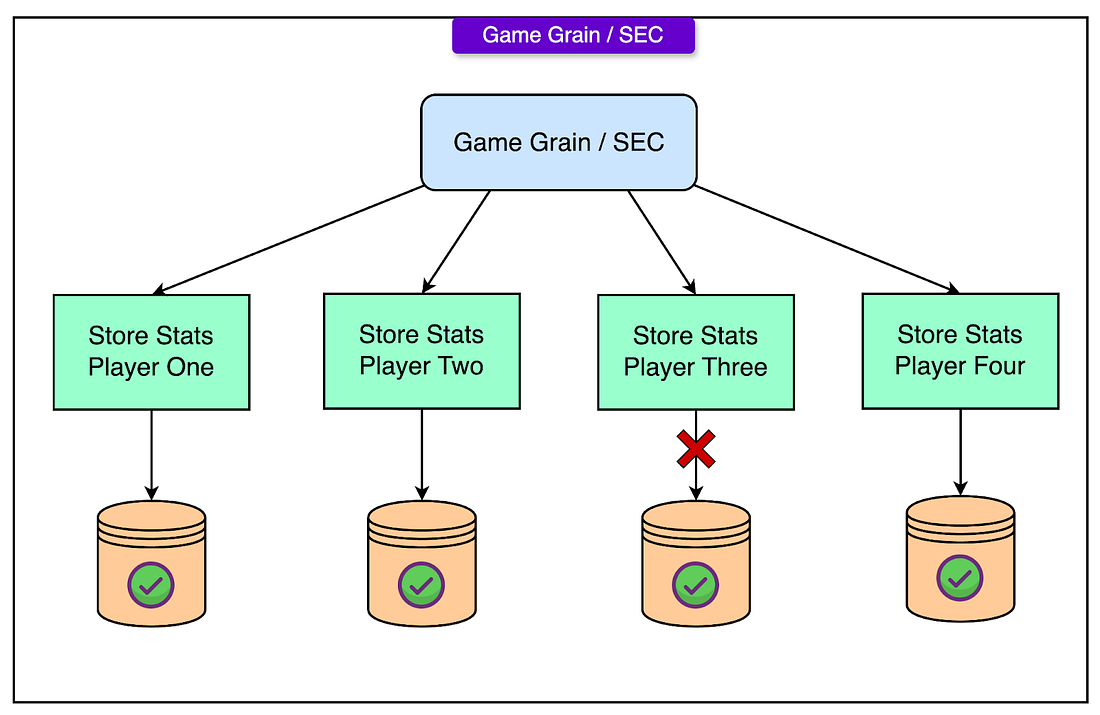- Mailing Lists
- in
- How Halo on Xbox Scaled to 10+ Million Players using the Saga Pattern
Archives
- By thread 5236
-
By date
- June 2021 10
- July 2021 6
- August 2021 20
- September 2021 21
- October 2021 48
- November 2021 40
- December 2021 23
- January 2022 46
- February 2022 80
- March 2022 109
- April 2022 100
- May 2022 97
- June 2022 105
- July 2022 82
- August 2022 95
- September 2022 103
- October 2022 117
- November 2022 115
- December 2022 102
- January 2023 88
- February 2023 90
- March 2023 116
- April 2023 97
- May 2023 159
- June 2023 145
- July 2023 120
- August 2023 90
- September 2023 102
- October 2023 106
- November 2023 100
- December 2023 74
- January 2024 75
- February 2024 75
- March 2024 78
- April 2024 74
- May 2024 108
- June 2024 98
- July 2024 116
- August 2024 134
- September 2024 130
- October 2024 141
- November 2024 171
- December 2024 115
- January 2025 216
- February 2025 140
- March 2025 220
- April 2025 233
- May 2025 239
- June 2025 303
- July 2025 48
How Halo on Xbox Scaled to 10+ Million Players using the Saga Pattern
How Halo on Xbox Scaled to 10+ Million Players using the Saga Pattern
The 6 Core Competencies of Mature DevSecOps Orgs (Sponsored)Understand the core competencies that define mature DevSecOps organizations. This whitepaper offers a clear framework to assess your organization's current capabilities, define where you want to be, and outline practical steps to advance in your journey. Evaluate and strengthen your DevSecOps practices with Datadog's maturity model. Disclaimer: The details in this post have been derived from the articles/videos shared online by the Halo engineering team. All credit for the technical details goes to the Halo/343 Engineering Team. The links to the original articles and videos are present in the references section at the end of the post. We’ve attempted to analyze the details and provide our input about them. If you find any inaccuracies or omissions, please leave a comment, and we will do our best to fix them. In today's world of massive-scale applications, whether it’s gaming, social media, or online shopping, building reliable systems is a difficult task. As applications grow, they often move from using a single centralized database to being spread across many smaller services and storage systems. This change, while necessary for handling more users and data, brings a whole new set of challenges, especially around consistency and transaction handling. In traditional systems, if we wanted to update multiple pieces of data (say, saving a new customer order and reducing inventory), we could easily rely on a transaction. A transaction would guarantee that either all updates succeed together or none of them happen at all. However, in distributed systems, there is no longer just one database to talk to. We might have different services, each managing its data in different locations. Each one might be running on different servers, cloud providers, or even different continents. Suddenly, getting all of them to agree at the same time becomes much harder. Network failures, service crashes, and inconsistencies are now of everyday situations. This creates a huge problem: how do we maintain correct and reliable behavior when we can't rely on traditional transactions anymore? If we’re booking a trip, we don’t want to end up with a hotel reservation but no flight. If we’re updating a player's stats in a game, we can't afford for some stats to update and others to disappear. Engineers must find new ways to coordinate operations across multiple independent systems to tackle these issues. One powerful pattern for solving this problem is the Saga Pattern, a technique originally proposed in the late 1980s but increasingly relevant today. In this article, we’ll look at how the Halo Engineering Team at 343 Game Studio (now Halo Studios) used the Saga pattern to improve the player experience. Build AI products and grow your impact (Sponsored)Two critical themes define today's engineering landscape: building AI applications and growing your influence in an increasingly automated world. So, we teamed up with Maven to curate 6 hands-on courses on these topics, led by experienced practitioners.
Our friends at Maven said to use code BYTEBYTEGO to get $100 off any of these selected courses. ACID TransactionsWhen engineers design systems that store and update data, they often rely on a set of guarantees called ACID properties. These properties make sure that when something changes in the system, like saving a purchase or updating a player's stats, it happens safely and predictably. Here’s a quick look at each property.
Single Database ModelIn older system architectures, the typical way to build applications was to have a single, large SQL database that acted as the central source of truth. Every part of the application, whether it was a game like Halo, an e-commerce site, or a banking app, would send all of its data to this one place. Here’s how it worked:
Some advantages of the single database model were strong guarantees enforced by the ACID properties, simplicity of development, and vertical scaling. Scalability Crisis of Halo 4During the development of Halo 4, the engineering team faced unprecedented scale challenges that had not been encountered in earlier titles of the franchise. Halo 4 experienced an overwhelming level of engagement:
Every match generated detailed telemetry data for each player: kills, assists, deaths, weapon usage, medals, and various other game-related statistics. This information needed to be ingested, processed, stored, and made accessible across multiple services, both for real-time feedback in the game itself and for external analytics platforms like Halo Waypoint. The complexity further increased because a single match could involve anywhere from 1 to 32 players. For each game session, statistics needed to be reliably updated across multiple player records simultaneously, preserving data accuracy and consistency. Inadequacy of a Single SQL DatabaseBefore Halo 4, earlier installments in the series relied heavily on a centralized database model. A single large SQL Server instance operated as the canonical source of truth. Application services would interact with this centralized database to read and write all gameplay, player, and match data, relying on the built-in ACID guarantees to ensure data integrity. However, the scale required by Halo 4 quickly revealed serious limitations in this model:
Given these challenges, the engineering team recognized that continuing to rely on a monolithic SQL database would limit scalability and expose the system to unacceptable levels of risk and downtime. A transition to a distributed architecture was necessary. Introduction to Saga PatternThe Saga Pattern originated through a research paper published in 1987 by Hector Garcia-Molina and Kenneth Salem at Princeton University. The research addressed a critical problem: how to handle long-lived transactions in database systems. At the time, traditional transactions were designed to be short-lived operations, locking resources for a minimal duration to maintain ACID guarantees. However, some operations, such as generating a complex bank statement, processing large historical datasets, or reconciling multi-step financial workflows, require holding locks for extended periods. These long-running transactions created bottlenecks by tying up resources, reducing system concurrency, and increasing the risk of failure. The Saga Pattern solves these issues in the following ways:
See the diagram below that shows an example of this pattern: Key technical points about Sagas are as follows:
Saga Execution ModelsThe main aspects of the Saga execution model are as follows: Single Database ExecutionWhen the Saga Pattern was first introduced, it was designed to operate within a single database system. In this environment, executing a saga requires two main components: 1 - Saga Execution Coordinator (SEC)The Saga Execution Coordinator is a process that orchestrates the execution of all the sub-transactions in the correct sequence. It is responsible for:
The SEC ensures that the saga progresses correctly without needing distributed coordination because everything is happening within the same database system. 2 - Saga LogThe Saga Log acts as a durable record of everything that happens during the execution of a saga. Every major event, starting a saga, beginning a sub-transaction, completing a sub-transaction, beginning a compensating transaction, completing a compensating transaction, ending a saga, is written to the log. The Saga Log guarantees that even if the SEC crashes during execution, the system can recover by replaying the events recorded in the log. This provides durability and recovery without relying on traditional transaction locking across the entire saga. Failure HandlingHandling failures in a single database saga relies on a strategy called backward recovery. This means that if any sub-transaction fails during the saga’s execution, the system must roll back by executing compensating transactions for all the sub-transactions that had already completed successfully. Here’s how the process works:
After all necessary compensations have been successfully applied, the saga is formally marked as aborted in the log. Halo 4 Stats ServiceHere are the key components of how Halo used the Saga Pattern: Service ArchitectureThe Halo 4 statistics service was built to handle large volumes of player data generated during and after every game. The architecture used a combination of cloud-based storage and actor-based programming models to manage this complexity effectively. The service architecture included the following major components:
The separation into game and player grains, combined with distributed cloud storage, provided a scalable foundation that could process thousands of simultaneous games and millions of concurrent player updates. Saga ApplicationThe team applied the Saga Pattern to manage the complex updates needed for player statistics across multiple partitions. The typical sequence was:
Through this structure, the team could ensure that updates were processed independently per player without relying on traditional ACID transactions across all player partitions. Forward Recovery StrategyRather than using traditional backward recovery (rolling back completed sub-transactions), the Halo 4 team implemented forward recovery for their statistics sagas. The main reasons for choosing forward recovery are as follows:
Here’s how forward recovery works:
By using forward recovery and designing for idempotency, the Halo 4 backend was able to achieve high availability. ConclusionAs systems grow to support millions of users, traditional database models that rely on centralized transactions and strong ACID guarantees begin to break down. The Halo 4 engineering team’s experience highlighted the urgent need for a new approach: one that could handle enormous scale, tolerate failures gracefully, and still maintain consistency across distributed data stores. The Saga Pattern provided an elegant and practical solution to these challenges. By decomposing long-lived operations into sequences of sub-transactions and compensating actions, the team was able to build a system that prioritized availability, resilience, and operational correctness without relying on expensive distributed locking or rigid coordination protocols. The lessons learned from this system apply broadly, not only to gaming infrastructure but to any domain where distributed operations must maintain reliability at massive scale. References: SPONSOR USGet your product in front of more than 1,000,000 tech professionals. Our newsletter puts your products and services directly in front of an audience that matters - hundreds of thousands of engineering leaders and senior engineers - who have influence over significant tech decisions and big purchases. Space Fills Up Fast - Reserve Today Ad spots typically sell out about 4 weeks in advance. To ensure your ad reaches this influential audience, reserve your space now by emailing sponsorship@bytebytego.com. © 2025 ByteByteGo |
by "ByteByteGo" <bytebytego@substack.com> - 11:36 - 6 May 2025

